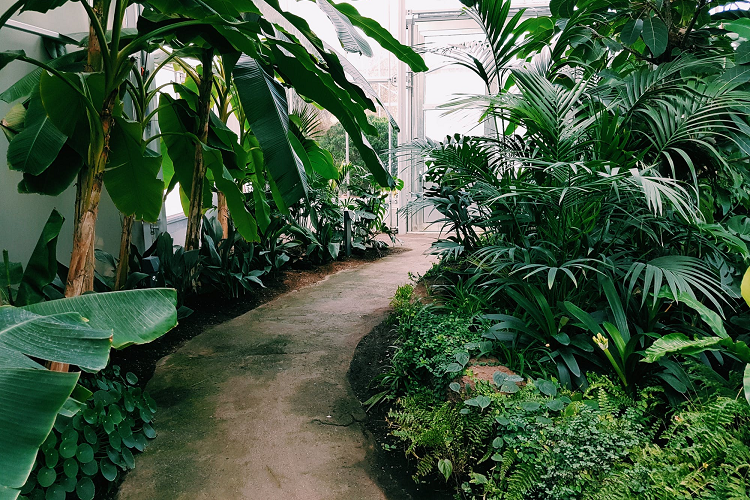You might have wondered about significant differences and similarities between Plants and Trees once in your lifetime. You probably have failed to understand why they belong to a similar family because they look different in size. The beginning phase of any growing tree is a plant, so we can say that ‘a plant may or may not become a tree, but a tree grows from a plant. Of all the five Kingdom grouping, plants and trees fall under the same, called ‘Plantae.’
Trees and plants are both members of the same Kingdom, Plantae; however, they have their unique qualities. Plant is one of the significant realms incorporating grass, spices, bushes, plants, shrubs, greeneries, green growth, and trees. Plants and trees are multicellular eukaryotes. They have stems, leaves pull, and a vascular framework for transferring food and water.
Trees and plants are helpful in numerous ways. They clean air, give oxygen, keep up with the temperature in the environment, conserve energy, forestall soil erosion and deforestation, and provide food and medications.
So, we can say that plants and trees have priceless significance for living beings and preserving nature. We will try to understand the significant differences and similarities between plants and trees on this page.
Let’s begin with understanding the meaning of both, Plants and Trees.
Plants
Plants (Plantae) are multicellular eukaryotes; they are one of the fundamental life types of the environment. They are known for photosynthetic nourishment, where synthetic energy uses water, daylight, minerals, and carbon dioxide. Besides, they are immobilized, which brings about a fixed presence. They can generally fill in a limited district.
Plants have a prominent vascular framework that helps move water and food all through the body. Their size changes from not many millimetres to 90 meters, and much more. There are different varieties of plants found worldwide; they are available in the dry zone, cold locale, submerged, high grounds, swamps, and so forth…
According to biologists, more than 390 900 types of plants are known, and the research is still going on to find more in various parts of the world. They all serve and protect the environment and human beings in one way. In simple words, it can be said that a wide range of energy devoured by the living being depends on the course of photosynthesis performed by the green plants.
Trees
A kind of woody plant that continues to grow for years. Trees (Plantae) have a solitary trunk that upholds their weight, the storage compartment has woody tissues, and the truck creates the branches.
Physiologically, we can understand the meaning of a tree as a tree with a trunk with dead tissues to manage the heaviness of the treetop. The xylem and phloem present inside the band of tissues support moving the food and water from roots to different tree pieces. Xylem is available inside the cambium, while phloem is available external the tissue.
The tree grows two-yearly rings consistently; one is in summer, a thick layer known as summerwood, and the second is in spring, a vast and dainty layer known as springwood structures.
The trees represent the central and most enormous variety on Earth. The biosphere straightforwardly or indirectly depends on activities like digestion, photosynthesis, recycling, just as their products (mash, organic products, leaves, blossoms, wood, and so forth). According to studies, there are more than 3 trillion mature trees from one side of the planet to the other.
Salient Features of Plants and Trees
The trees and plants have a vascular construction, with roots, stems, and leaves moving food and water all through the plant. Plants have delicate or somewhat woody stems, while trees have one hard, woody, tall trunk with few leaves or branches on the lower segment. Plants are nearer to the ground, and sometimes they are entire of leaves, like grasses and bushes.
Shapes and Sizes
Trees grow in different structures, from columnar kinds to pyramid-molded trees to spreading and adjusted systems. They differ in size like dwarf trees that are 10 feet tall to bushes and tall trees like monster sequoias (Sequoiadendron giganteum) that might grow up to 260 feet tall in U.S. Plants, on the other hand, are closer to the earth and make structures like grasses, greeneries, bushes, mats, and clusters.
Development speed
Plants and trees grow, given that they approach light, water, and air; however, plants will quite often become quicker and arrive at their most extreme stature and size sometime before trees. Plants continue to grow before they end up becoming trees. Trees grow at different speeds relying upon the species. Some of the fastest-growing trees that are readily available in nature are
- Hybrid poplar
- Weeping willow
- Dawn redwood
- River Birch
Among plants, bamboo is one of the fastest-growing plants. It can grow multiple feet in a single day, accepting ideal conditions.
Survival techniques
Plants fall into “ruderal,” “circumventor,” or stress-tolerant classifications. Ruderals, including yearly and lasting plants, make many seeds that repeat rapidly. Circumvention, including plants and trees, is less productive in seed creation, more open-minded toward environmental factors than ruderals, and has some insurance against infection and vermin. Stress tolerant plants and trees flourish with little water and no manure. They likewise shield themselves from hunters with bark and gums that kill specific bugs and repress infections.
External protection
Trees behave differently in terms of external protection because they have bark. Tree Bark is a defensive covering, which covers the trunk. This woody tissue contains, for the most part, dead phloem and plug. Human skin is just like the bark in terms of protecting the Internal structure of the human being. Bark gives an obstruction, which keeps dampness in simultaneously as forestalling sickness and disease and stopping hunters.
In trees, wounds are healed by two different methods resulting in both substance and actual boundaries around the cells that have been harmed. This interaction empowers the leftover sound cells to develop and the eliminated cells to stop rotting, consequently prompting recovery. Considering all factors, some callus development continues. In the end, it covers and heals the injury, permitting new, uncontaminated wood to develop over the injured part.
Life expectancy
Plants live for more limited periods than trees – – annuals live for just one season, bi-annuals for two seasons, and perennials somewhere in the range of five years to 100 years. Trees typically live for 100 to 150 years, for some living even 200 years and some even 300 years or more.
Annual/Perennial plants and trees
Trees are Perennial because they have a longer life span. On the other hand, plants are annual because they last for a specific season only. Plants can be yearly, semiannual or enduring, depending on their type. Perennials survive for at least five years, with many living up to 100 years. As the name suggests, half-yearly plants are just the last two seasons. There is a hereditary distinction between yearly and enduring plants. Annuals live for just one blooming season, and afterward, they die while perennials regrow each year.
Area of application
Human beings use Plant and Trees differently. Trees are different species, and they offer us an abundance of chances. We use trees to make a wide range of items and things. From furniture and paper to creating fuel for keeping warm and utilizing wood to fabricate and develop homes and houses, trees are inconceivably valuable.
Plants are beneficial too. Many individuals use plants to make excellent nurseries and add a positive aura to indoor spaces. People involved in different professions use plants differently. Analysts, makers, gourmet specialists, and researchers use plants to make medicines and cures and produce food and beverages.
Just as their possible uses and area of applications, trees and plants can likewise impact our mindsets and how we feel. Studies propose that living life around plants and trees helps to live a healthy life. Research shows that individuals who have plants in their workplaces and work environments are more productive at work.
Final Words
Now that we have mentioned multiple qualities of plants and trees, it won’t be challenging to understand the difference between them. For the most part, trees are a lot bigger than plants. Trees also have a single woody stem and are alluded to as a trunk. Plants usually have a few roots, yet they are promptly bendable and fairly more fragile. Another qualification is that trees do not have many leaves or branches on the lower portions of their body. Most leaves are present at the apex of the middle. Plants, although they are nearer to the ground, actually have left. A few plants are made altogether out of leaves too. Trees have a little scope of shapes, from three-sided and adjusted structures to columnar assortments. As opposed to trees, plants have a wider variety of conditions. In this way, there is a significant distinction between tree and plant.




